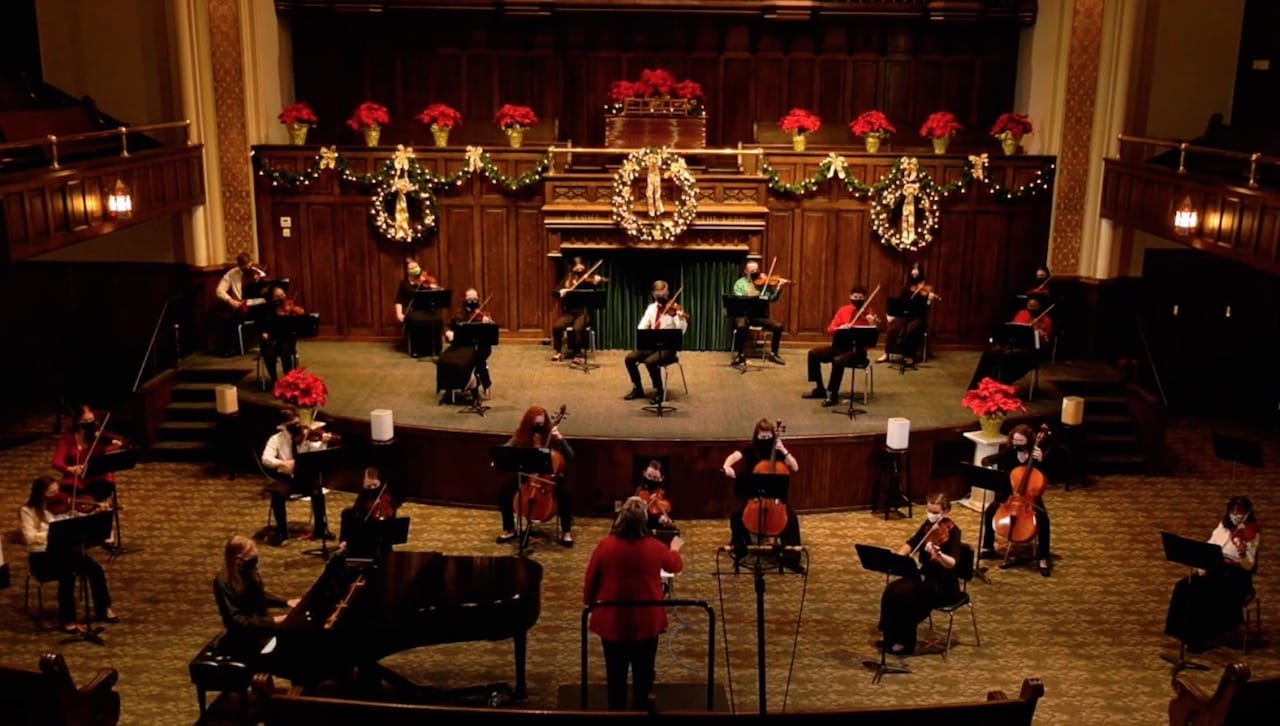Performance Music Continues with COVID Edition

Inside Higher Ed published an article written by Performance Music Director Cheryl Y. Boga about adaptions made during the pandemic so that student musicians could still sing and play instruments safely at Scranton.
Excerpts from the article follow.
My students at the University of Scranton were, like many across the country, also prevented by the pandemic from playing a woodwind or brass instrument in a band or singing in the choir this fall. We had all learned a new word -- aerosolization -- the spread of tiny droplets of our breath, which has been shown to increase significantly when playing wind instruments or singing. We offer no major in music, so we decided it just did not make sense to do things that increased risk -- especially since playing such instruments or singing was not part of those students’ formal curriculum nor, most likely, their future livelihood. Still, I wanted to help find a way they could make music together, because it's such an important outlet and means of expression for so many of them. …
The pandemic did not limit opportunities for every musician on our campus. Those who played string and percussion instruments could be fully masked, and we were able to continue those ensembles, although in separate and smaller sections to enable safe setup and social distancing. So we asked ourselves: What if our wind musicians and singers pivoted and learned to make music another way? And we began offering choir members and woodwind and brass players the opportunity to learn to play a string or percussion instrument. …
It also became clear quickly that we needed a way to teach these instruments to adult beginners who were already musicians, a way that moved a little faster by building upon the knowledge and skills they had developed through their other musical pursuits. …
So we created our own methods. We added Zoom master classes with guest artists and friends of our program from places like the Boston Symphony, the Cleveland Orchestra and the Juilliard School. I also began an intermittent online webcast called “Scranton Isolation Informances,” in which a changing panel of student, staff and alumni guest hosts discussed interdisciplinary topics with a number of acclaimed musicians we have had the privilege of making music with in past semesters.
The support we received in this undertaking was vital and came not only from within the institution but also from our alumni. Knowing how important making music together was to them while they were students, they responded with generous donations that allowed us to purchase dozens of string instruments, additional percussion equipment and steel drums from Trinidad and Tobago.
The full article can be seen on Inside Higher Ed’s webpage.
Nearly 140 University student musicians participate in the COVID ensembles, which include percussion groups, strings groups and the virtual choir project.






